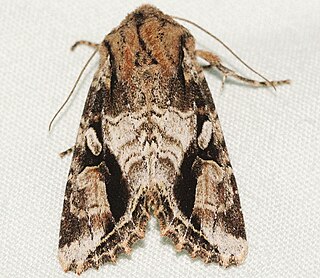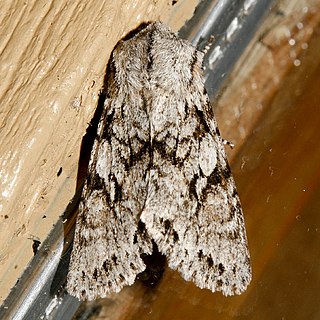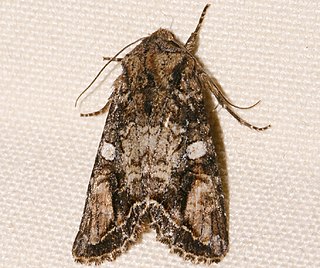
Egira rubrica is a species of cutworm or dart moth in the family Noctuidae. It is found in North America.
Egira cognata is a species of cutworm or dart moth in the family Noctuidae. It is found in North America.

Egira simplex is a species of cutworm or dart moth in the family Noctuidae. It is found in North America.
Egira baueri is a species of cutworm or dart moth in the family Noctuidae. It is found in North America.

Egira crucialis is a species of cutworm or dart moth in the family Noctuidae. It is found in North America.
Properigea perolivalis is a species of cutworm or dart moth in the family Noctuidae. It was first described by William Barnes and James Halliday McDunnough in 1912 and it is found in North America.

Egira perlubens, the brown woodling, is a species of cutworm or dart moth in the family Noctuidae. It is found in North America.
Egira alternans, the alternate woodling, is a species of cutworm or dart moth in the family Noctuidae. It is found in North America.
Lacinipolia spiculosa is a species of cutworm or dart moth in the family Noctuidae. It is found in North America.
Anarta fulgora is a species of cutworm or dart moth in the family Noctuidae first described by William Barnes and James Halliday McDunnough in 1918. It is found in North America.
Egira variabilis is a species of cutworm or dart moth in the family Noctuidae. It is found in North America.
Lineostriastiria olivalis is a species of moth in the family Noctuidae. It was first described by William Barnes and James Halliday McDunnough in 1916 and it is found in North America.
Unciella primula is a species of moth in the family Noctuidae. It was first described by William Barnes and James Halliday McDunnough in 1918 and it is found in North America.
Leucania incognita is a species of cutworm or dart moth in the family Noctuidae first described by William Barnes and James Halliday McDunnough in 1918. It is found in North America.
Clostera strigosa, the striped chocolate-tip or drab tent-maker moth, is a species of moth in the family Notodontidae. It was first described by Augustus Radcliffe Grote in 1882 and it is found in North America.
Xylomoia chagnoni, the Chang borer moth, is a species of cutworm or dart moth in the family Noctuidae. It was first described by William Barnes and James Halliday McDunnough in 1917 and it is found in North America.
Alypiodes geronimo is a species of owlet moth in the family Noctuidae first described by William Barnes in 1900. It is found in North America.

Egira curialis is a species of cutworm or dart moth in the family Noctuidae. It is found in North America.
Cryphia sarepta is a species of moth in the family Noctuidae. It was first described by William Barnes in 1907 and it is found in North America.
Plagiomimicus ochoa is a species of moth in the family Noctuidae. It was first described by William Barnes in 1904 and it is found in North America.




